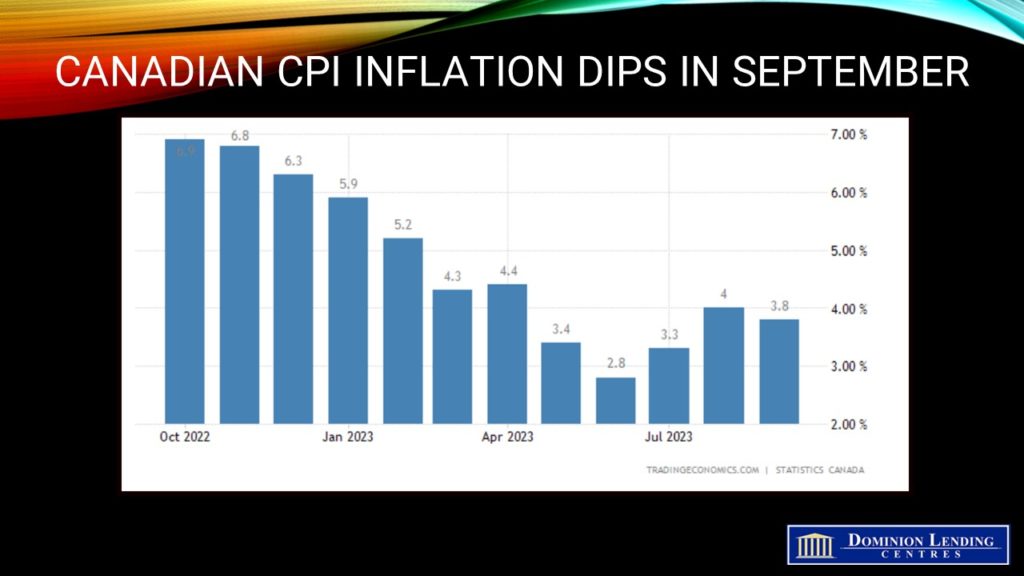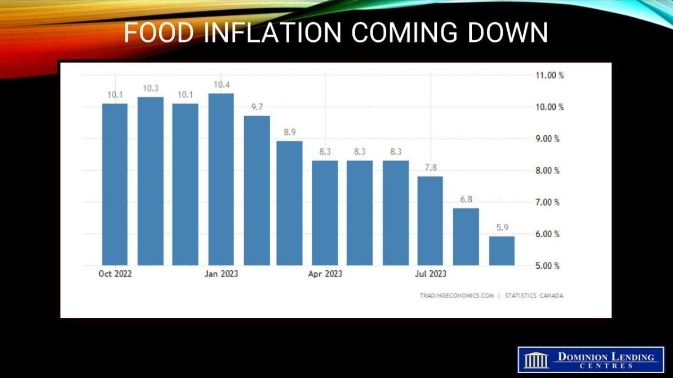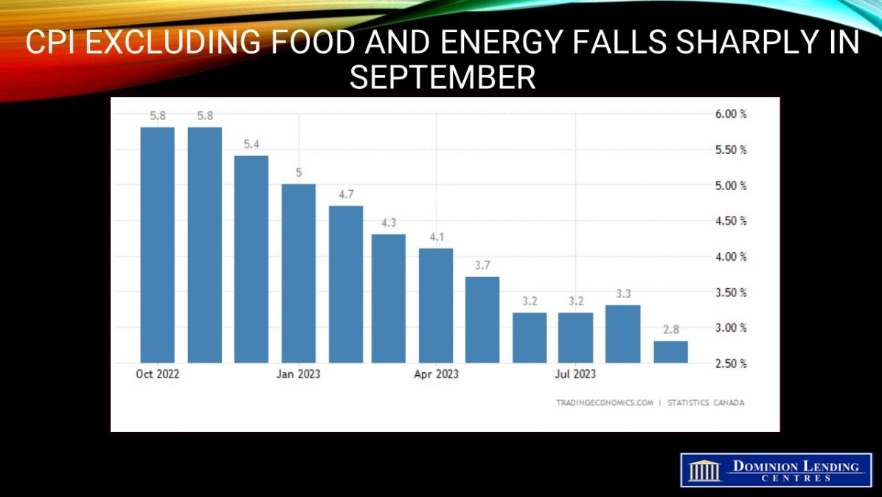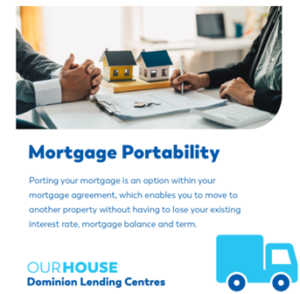|
|||||||||||||
|
|
Canadian Inflation Rises to 3.4% Y/Y In December
General Kimberly Coutts 16 Jan

General Kimberly Coutts 16 Jan
|
|||||||||||||
|
|
General Kimberly Coutts 10 Jan
|
|
|
General Kimberly Coutts 20 Dec

|
|
|
|
|
|
General Kimberly Coutts 18 Dec

|
|
|
|
|
|
|
|
|
|
|
|
General Kimberly Coutts 6 Dec
As we expected the Bank of Canada has held it’s overnight lending rate steady at 5% (this is the rate that the B of C utilizes to lend money to other banks). What this means is that the Bank of Canada Prime stays at 7.2%, which is what affects us consumers. It has been the third pause in a row which I’m sure we are all collectively very happy about. Especially for those of us that have Variable Rate Mortgages, Home Equity Lines of Credit or any other sources of debt that are attached to the Prime Lending Rate.
The expectation by economists, is that the B of C will begin cutting the overnight rate sometime in 2024 and as early as April. Over the last couple of weeks, conversations around variable rate options are coming back given this insight.
If you are up for renewal in the next 6 months and have questions of which direction to go in, please set up a Strategy Call to discuss. It’s not always best to sign the first offering from the lender and I’m happy to review options. Over the last few weeks, we’ve seen a steady stream of emails from lenders reducing their 3, 4 & 5 yr fixed rates.
I’m fortunate enough to receive economist commentaries so for those of you that want a bit more in-depth analysis, the below comments are from James Orlando, TD CFA, Director & Senior Economist
Slowing economy keeps the Bank of Canada on hold in December
Key Implications
Mark your calendars as the scheduled dates for the interest rate announcements for 2024 are as follows:
General Kimberly Coutts 30 Nov
|
|
|
|
|
|
|
| Dr. Sherry Cooper Chief Economist, Dominion Lending Centres |
General Kimberly Coutts 18 Oct

Published by Sherry Cooper October 17, 2023
Today’s inflation report for September was considerably better than expected, ending the three-month rise in inflation. Not only did the headline inflation rate fall, but so did the core measures of inflation on a year-over-year basis and a three-month moving average basis. This, in combination with the weak Business Outlook Survey released yesterday, suggests that the overnight policy rate at 5% may be the peak in rates. While I do not expect the Bank to begin cutting rates until the middle of next year, the worst of the tightening cycle may well be over.
Offsetting the deceleration in the all-items CPI was a year-over-year increase in gasoline prices, which rose faster in September (+7.5%) compared with August (+0.8%) due to a base-year effect. Excluding gasoline, the CPI rose 3.7% in September, following a 4.1% increase in August. Looking ahead to the October inflation report, the base effect for headline CPI is favourable, as CPI surged in October 2022. Gasoline prices are down about 7% so far this month. Given the war in the Middle East, however, there is no guarantee that this will hold, but if it does, the October headline CPI could move into the low-3% range.
On a monthly basis, the CPI fell 0.1% in September after a 0.4% gain in August. The monthly slowdown was mainly driven by lower month-over-month prices for gasoline (-1.3%) in September. Goods inflation fell 0.3% from a month earlier, the first time since December 2022, and grew 3.6% from a year ago versus 3.7% in August. Services inflation was unchanged from August, the first time it hasn’t grown on a monthly basis since November 2021, while the rate slowed to 3.9% on a yearly basis, from 4.3% in August.

Yesterday’s Survey of Consumer Expectations showed that perceptions of current inflation remain well above actual inflation. One reason is the very visible level of grocery and gasoline prices. As the chart below shows, food inflation–though still elevated–decelerated to 5.9% last month, and CPI excluding food and energy fell to a cycle-low 2.8%. Large monthly gains in September 2022, when grocery prices increased at the fastest pace in 41 years, fell out of the 12-month movements and put downward pressure on the indexes.


Prices for durable goods rose at a slower pace year over year in September (+0.4%) compared with August (+1.4%). The purchase of new passenger vehicles index contributed the most to the slowdown, rising 1.7% year over year in September, following a 3.1% gain in August. The deceleration in the price of new passenger vehicles was partly attributable to improved inventory levels compared with a year ago.
Additionally, furniture prices (-4.6%) and household appliances (-2.3%) continued to decline year-over-year in September, contributing to the slowdown in durable goods. Consumers paid less on a year-over-year basis for air transportation (-21.1 %) in September, coinciding with a gradual increase in airline flights over the previous 12 months.
Other measures of core inflation followed by the Bank of Canada also decelerated.
Bottom Line
According to Bloomberg News calculations, “A three-month moving average of underlying price pressures that Governor Tiff Macklem has flagged as key to policymakers’ thinking fell to an annualized pace of 3.67%, from 4.29% a month earlier.” While this is still well above the Bank’s 2% target, the global economy is slowing, the Canadian and US economies are slowing, and with any luck at all, the Bank of Canada might see inflation move to within its target range next year. However, the central bank will be cautious, refraining from rate cuts until the middle of next year. The full impact of rate hikes has yet to be felt. The next move by the Bank of Canada could be a rate cut, but not until next year.
General Kimberly Coutts 18 Oct
 So, you need a tenant.
So, you need a tenant.If you have a basement suite or rental property and you are currently looking for a tenant, there are some things to know! Whether this is your first tenant or you have other rental properties, it is a good idea to familiarize yourself with the specifics to ensure a harmonious tenancy.
As always, your responsibility as the landlord is to keep your rental properties in good condition and ensure they meet health, safety, and housing standards. However, as a landlord, you also have additional responsibilities around the rental agreement and tenant regulations.
Tenancy Agreement
Landlords are required to prepare a written agreement for every tenancy. Bear in mind, if this agreement is not prepared the standard terms for your province will still apply, especially if a security deposit is paid. This agreement should clearly outline the following:
The tenancy agreement should also outline if there is the ability to add a roommate, and whether or not utilities, parking, storage, laundry, etc. are included.
Deposits
Typically, a security or damage deposit is requested by the landlord to establish tenancy and cover any unexpected issues that may arise. The deposit can be no more than half of the first month’s rent.
If you are charging a pet deposit fee, note that guide or service pets are exempt from any damage deposits. In addition, you cannot charge fees beyond the pet damage deposit.
Move In
To ensure the move-in goes smoothly, tenants and landlords should schedule a move-in time that works for everyone. At the beginning of the tenancy, you may also consider an inspection before the new tenant has moved in to ensure everyone is on the same page and the condition of the unit is clear in regard to any potential damages or fixes needed.
As a landlord, you are also responsible for changing the locks (at your cost) should the new tenant request it.
Additional Considerations
As a landlord, you will want to assess the suitability of any new tenant before signing the agreement. There are a few things you can do to ensure a smooth process and the right choice of tenant:
Once you have reviewed the above, you will be in a good position to determine if the potential tenant is a good fit for the rental space.
However, keep in mind that you cannot refuse to rent to a tenant based on any discriminatory aspects such as race, gender, sexual orientation, religion, etc. In addition, you cannot refuse to rent to individuals on income assistance.
While it can seem like a lot, with the proper preparation and understanding of tenant laws and regulations in your area, you can ensure a smooth and successful rental process!
General Kimberly Coutts 12 Sep
 Mortgage Portability.
Mortgage Portability.When it comes to getting a mortgage, one of the more overlooked elements is the option to be able to port the loan down the line.
Porting your mortgage is an option within your mortgage agreement, which enables you to move to another property without having to lose your existing interest rate, mortgage balance and term. Thereby allowing you to move or ‘port’ your mortgage over to the new home. Plus, the ability to port also saves you money by avoiding early discharge penalties should you move partway through your term.
Typically, portability options are offered on fixed-rate mortgages. Lenders often use a “blended” system where your current mortgage rate stays the same on the mortgage amount ported over to the new property and the new balance is calculated using the current interest rate. When it comes to variable-rate mortgages, you may not have the same option. However, when breaking a variable-rate mortgage, you would only be faced with a three-month interest penalty charge, which is much lower than the average penalty to break a fixed mortgage. In addition, there are cases where you can be reimbursed the fee with your new mortgage.
If you already have the existing option to port your mortgage, or are considering it for your next mortgage cycle, there are a few considerations to keep in mind:
To get all the details about mortgage portability and find out if you have this option (or the potential penalties if you don’t), book a call with me today for expert advice and a helping hand throughout your mortgage journey!
General Kimberly Coutts 12 Sep
 The True Cost of Downsizing.
The True Cost of Downsizing.Many Canadians consider downsizing during their retirement years. Once their children have left the nest, the choice seems obvious: relocate to a smaller residence or a more affordable town and capitalize on the price difference. For many retirees, the funds from the sale of their home can significantly impact their overall lifestyle and financial well-being.
However, there are downsides of downsizing you should be aware of before you call your realtor.
Downsizing in Canada: A Cost Analysis
The cost of moving is probably one of the biggest downsides to downsizing. To give you an idea of the figures involved, we conducted a cost analysis for a typical downsizing scenario using an example of selling a home in Toronto for $1,000,000 and buying a condo for $700,000.
Theoretically, this would free up $300,000 in equity while moving you into a smaller home. According to Ratehub, you need a nest egg of $450,000 if you want to retire comfortably in Canada. The money from the sale of your home could have a meaningful impact on your retirement finances. But how much of that chunk will you get to keep to boost your nest egg? Below is an estimated list of cost considerations when choosing to downsize:
| Fees | Downsizing | Reverse Mortgage |
| Real estate fees (average 5% selling price) | $50,000 | N/A |
| Legal Fees | $1,200-$2,400 | $300-$600 |
| Land Transfer Tax (Varies depending on province and city) | $8,975 | N/A |
| Moving expenses (packing supplies, moving service, garbage removal, etc.) | $3,000-$6,500 | N/A |
| Furnishing and upgrades | $8,000-$25,000 | N/A |
| Home appraisal | $500 | $300-$600 |
| Closing fee | $500-,$1500 | $1,795-$2,995 |
| Total | $72,175-$94,875 | $2,395-$4,195 |
As you can see, downsizing could cost you between $72,175 – $94,875.
If you live in a big city like Toronto, $300,000 of equity could shrink to just $205,125* after considering these downsizing costs. However, these costs are not the only negative effects of downsizing to consider.
The Downsizing Dilemma
Many Canadians underestimate the financial and emotional costs of downsizing, overlooking various aspects:
An Alternative to Downsizing in Canada: A Reverse Mortgage
A Reverse Mortgage can be the ideal alternative to downsizing. Unlock up to 55% of your home’s equity in tax-free cash while staying in your beloved home without leaving the neighbourhood you love. This money improves your retirement finances and can be used to renovate and retrofit the home for accessibility and livability as you age. With no required monthly mortgage payments to make, a Reverse Mortgage is becoming a popular solution.
Book a strategy call with me to learn how a Reverse Mortgage can help you save on the stress and expense of downsizing and live the retirement of your dreams.
*Based on $300,000 of equity minus $94,875 (the highest downsizing cost).